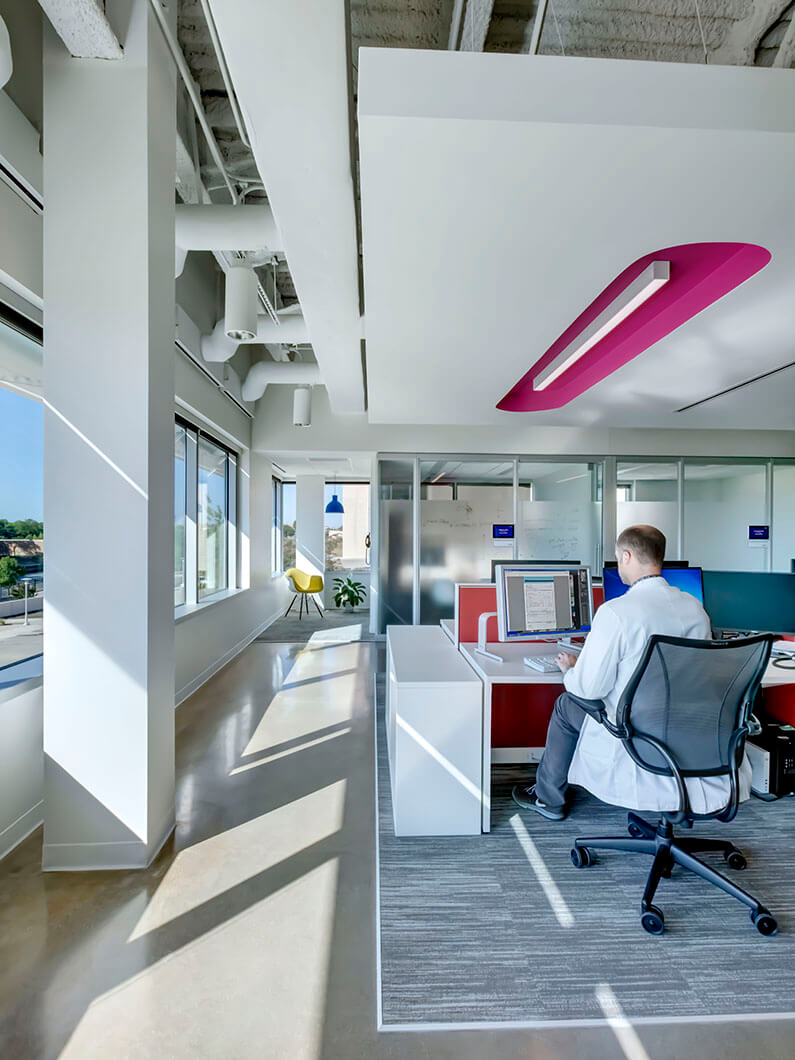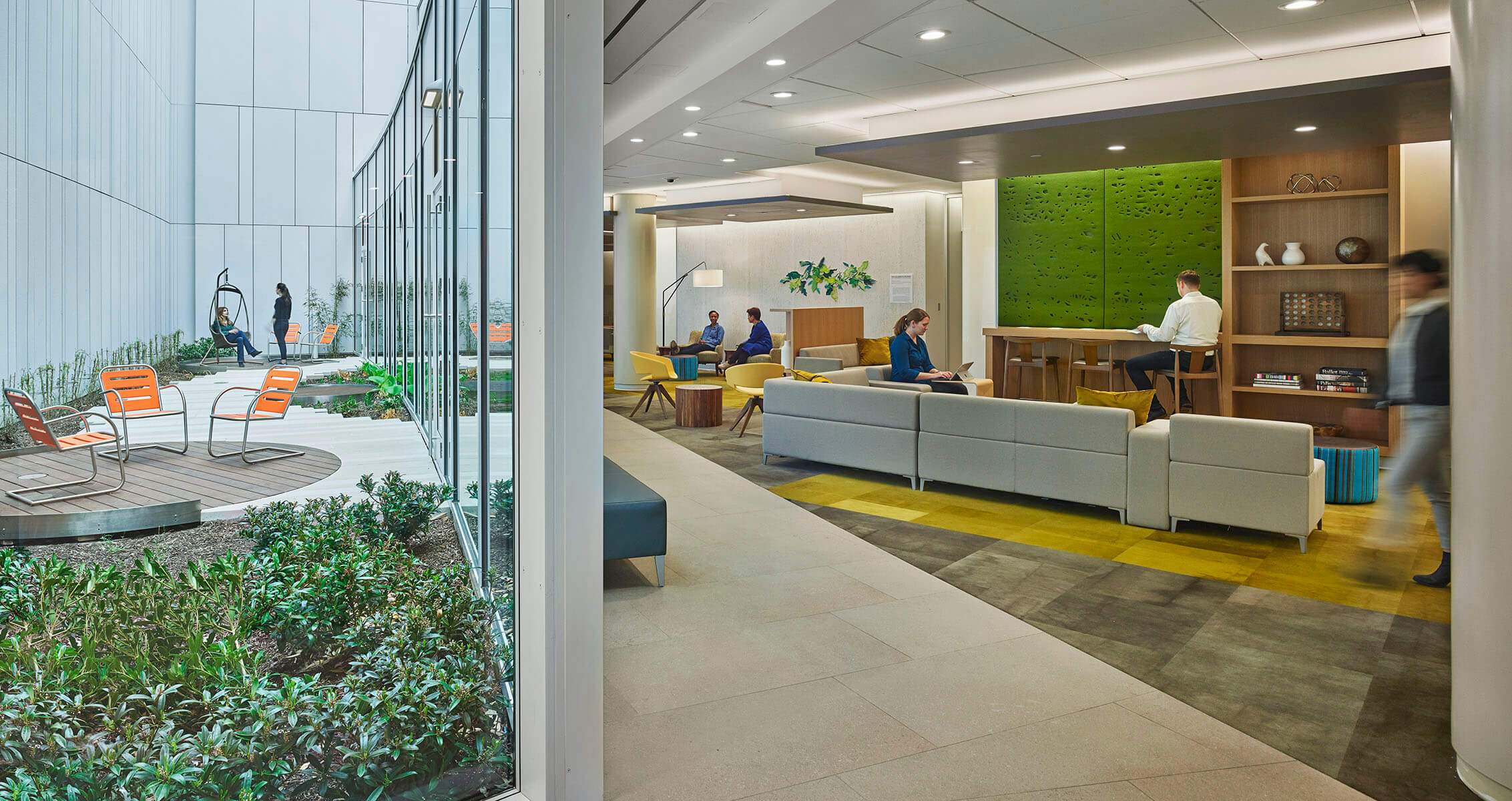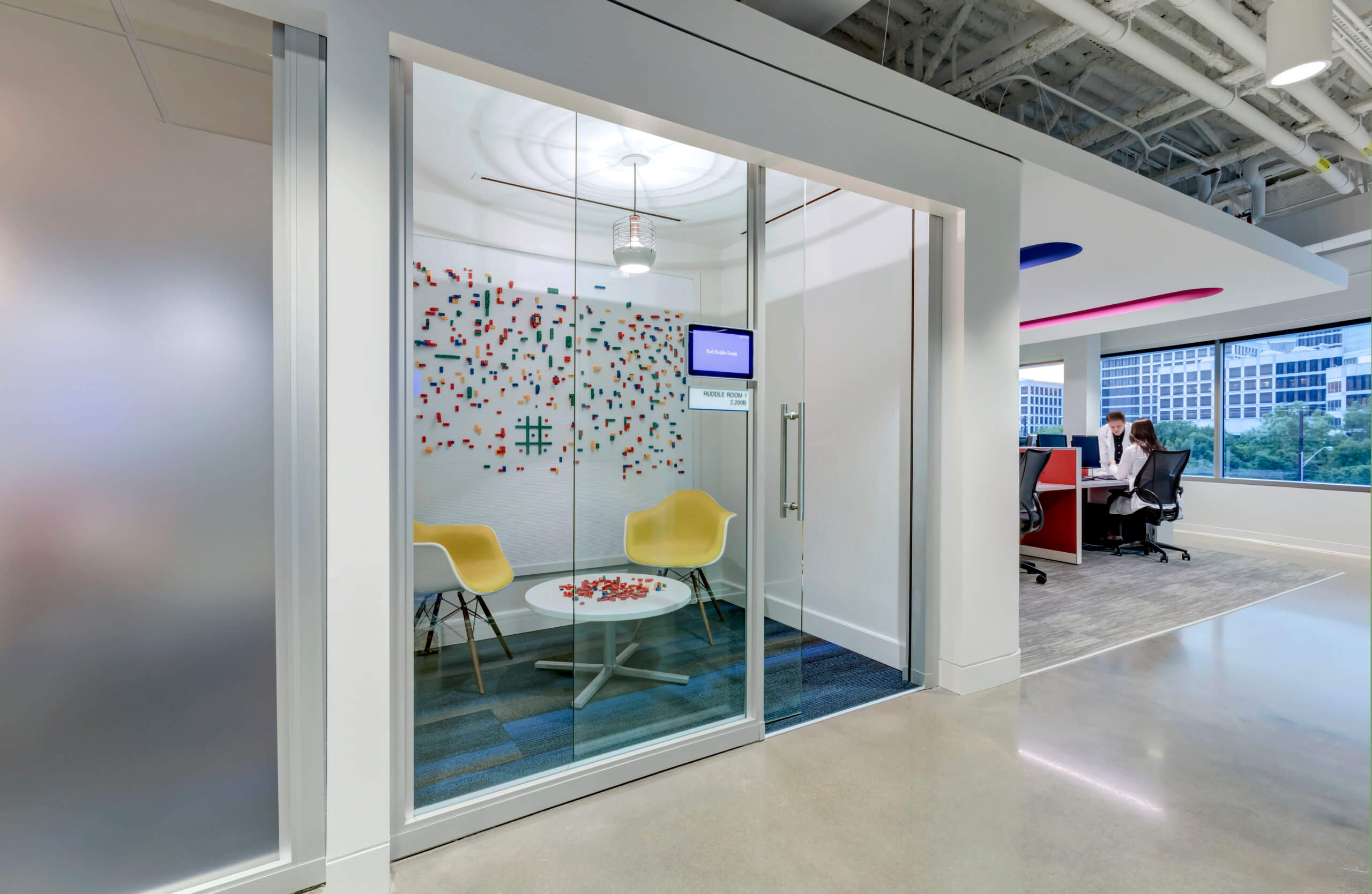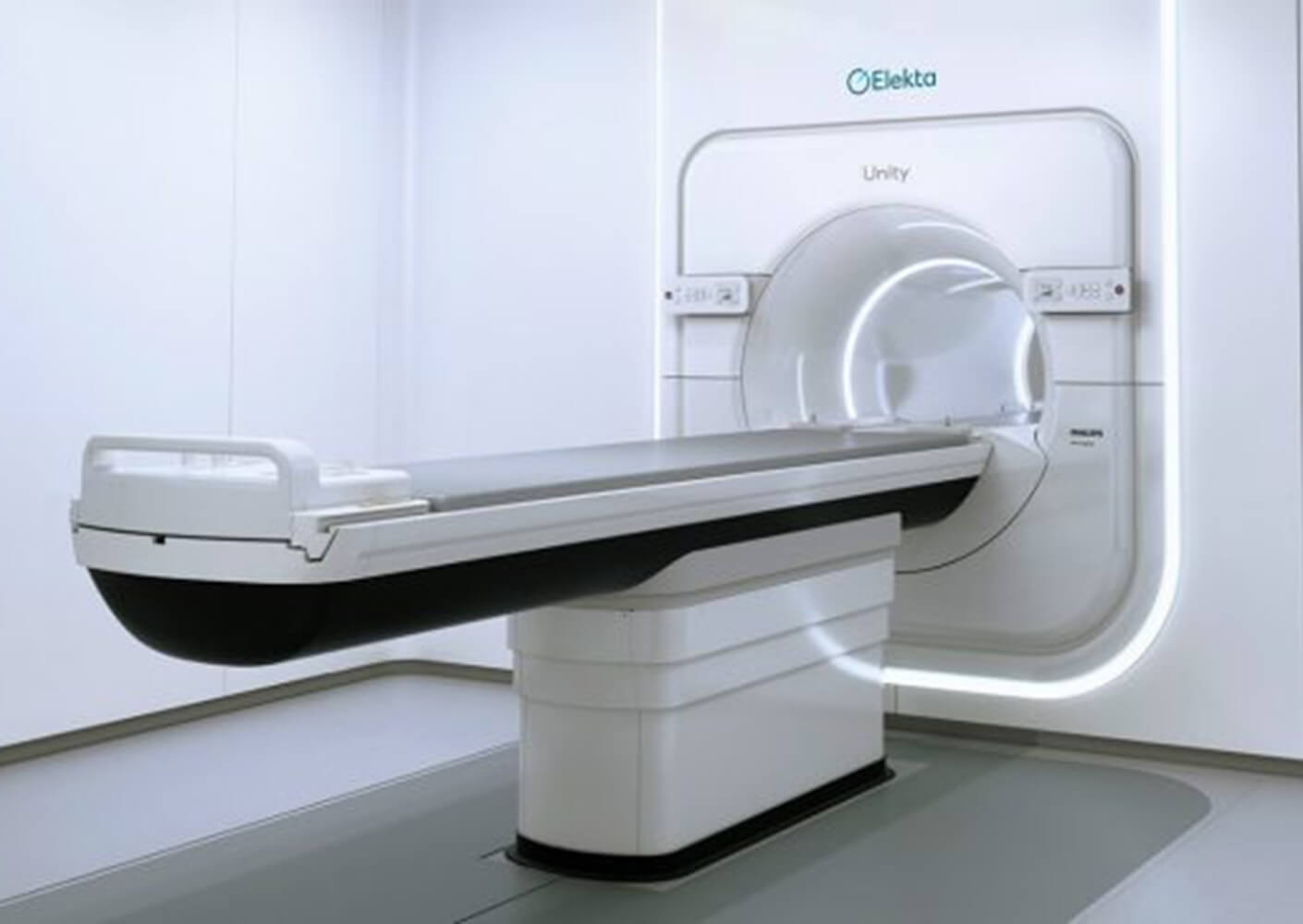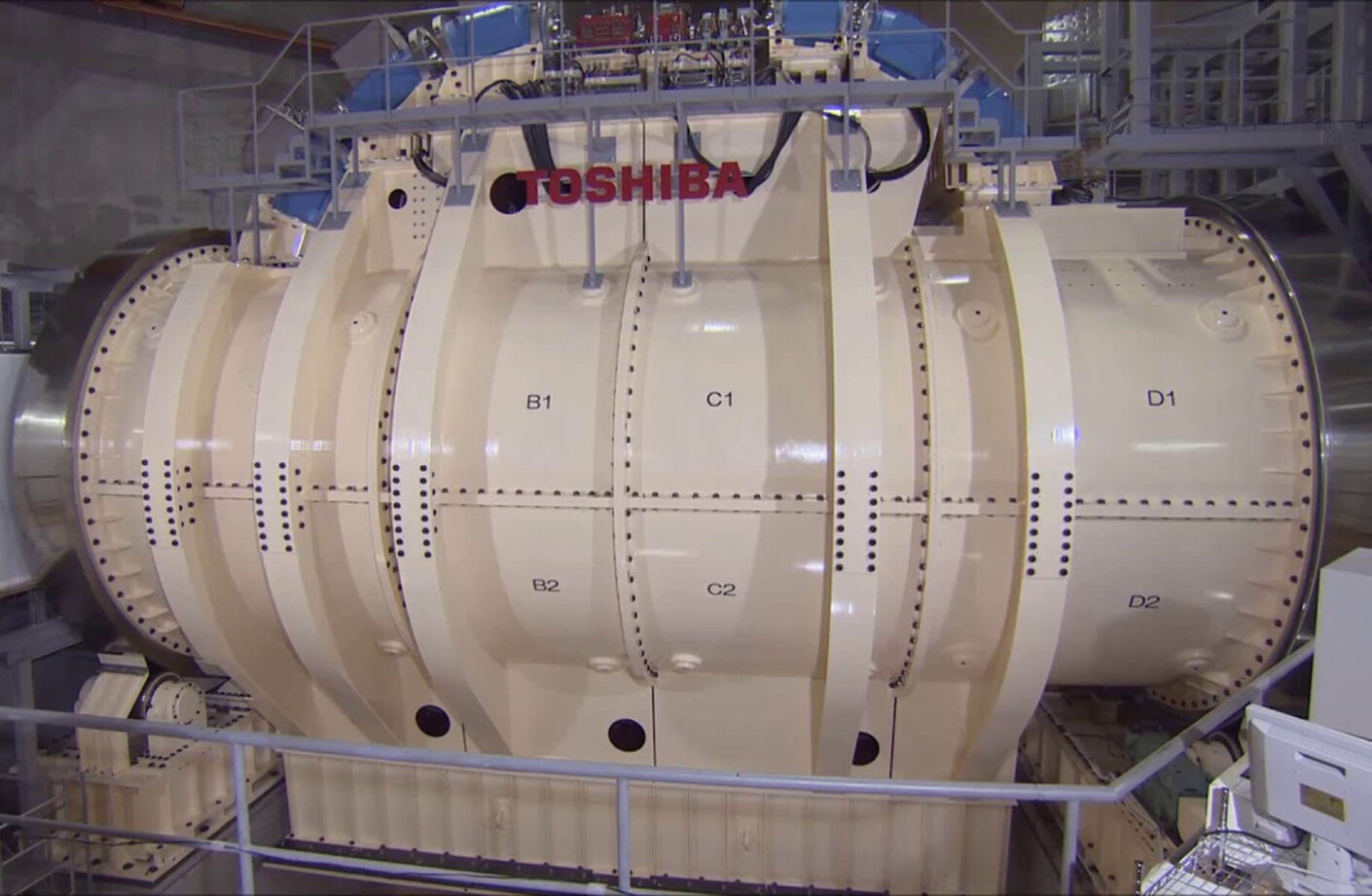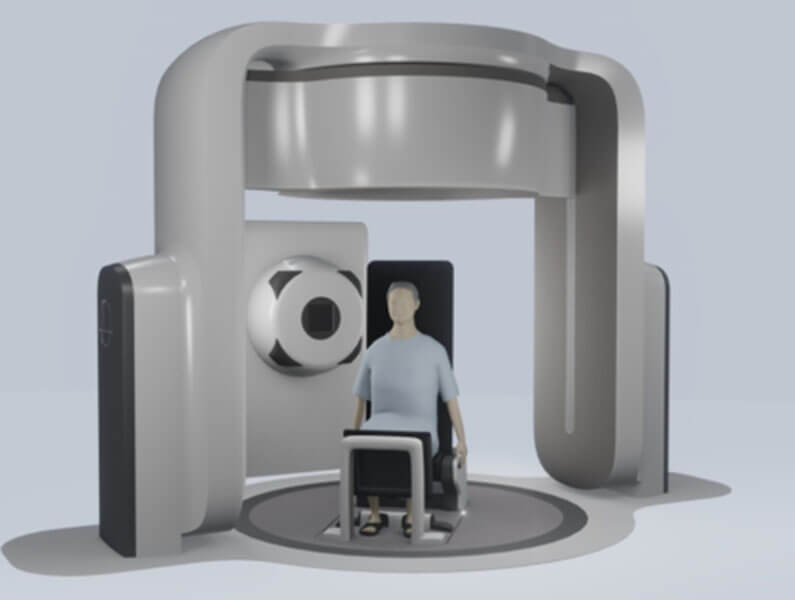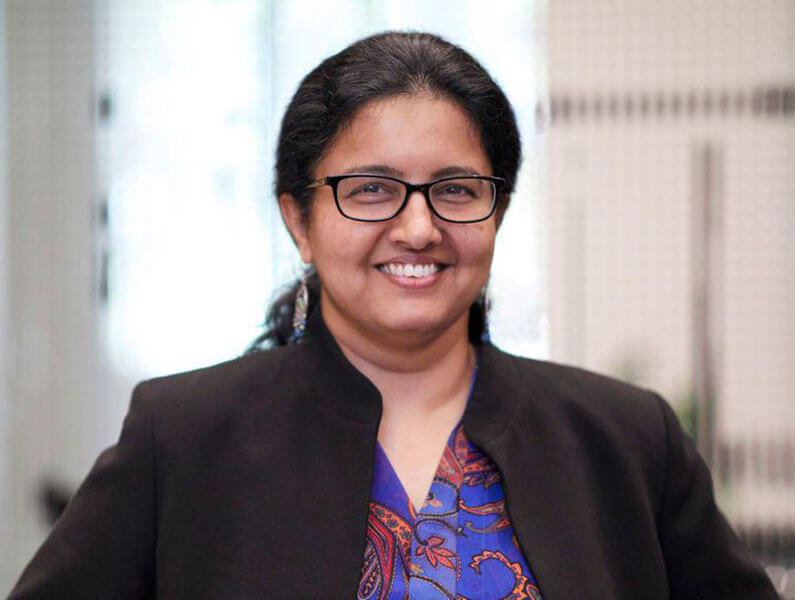As patients are usually accompanied by family members for longer periods of time, support zones like waiting or work areas, as well as cafes or nutrition zones, ensure their comfort. For patients, options are important—like the ability to choose between a private infusion zone or a community one, where they can exchange information with and derive comfort from other patients. Additional strategies aimed at reducing stress include separating first-time patient consults from ongoing treatment patient consults, providing comfortable gowning areas, and creating program adjacencies that reduce travel distances.
Many studies have reinforced the positive impacts of nature within a healthcare environment, from providing a sense of hope to physically rejuvenating patients. Ample daylight and views to the outside, healing gardens, and programming—like farmers markets, art integration, and cooking classes—can all improve well-being. We applied many of these strategies at Richard M. Schulze Family Foundation American Cancer Society, Hope Lodge, a “home away from home” for cancer patients undergoing treatment. Here, we designed a beautiful and accessible garden that reinforces nature’s healing properties and natural light. Communal activity rooms promote positive social interaction amongst guests, while spacious suites allow for a private retreat after tiring treatments. Guided by our Precautionary List, we selected natural materials, which contribute to a healthy and inviting environment for all guests.

